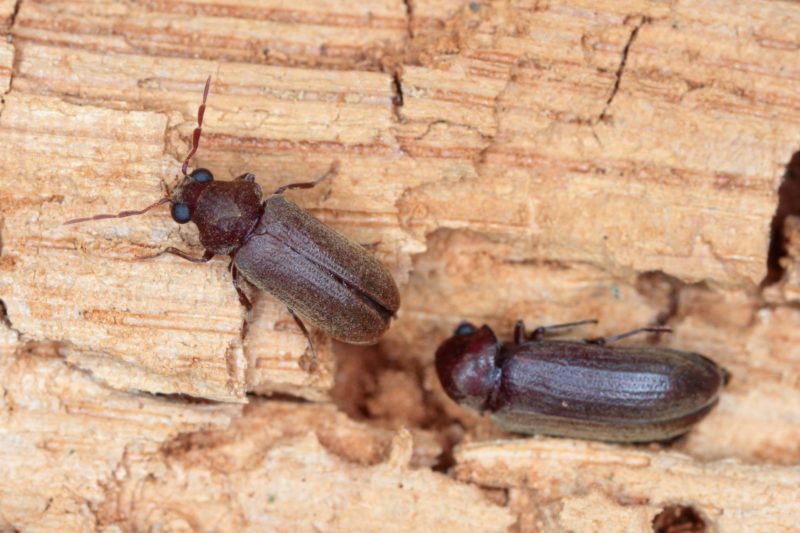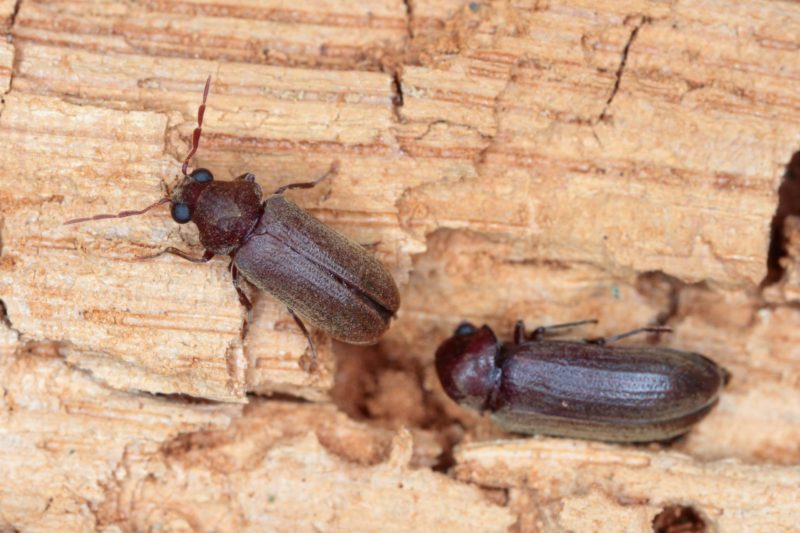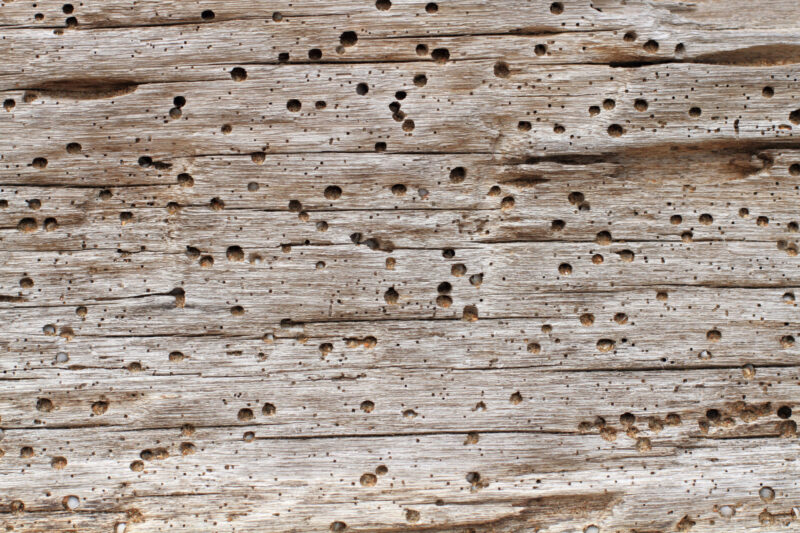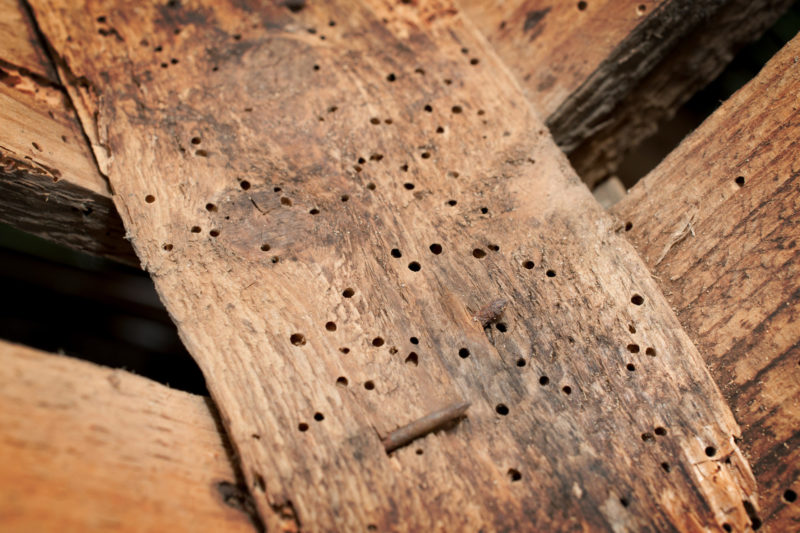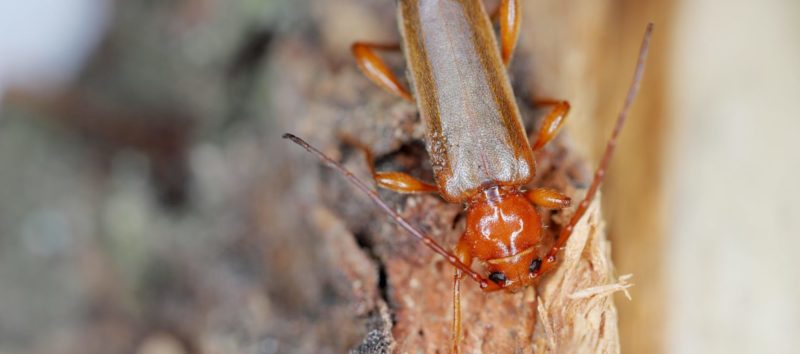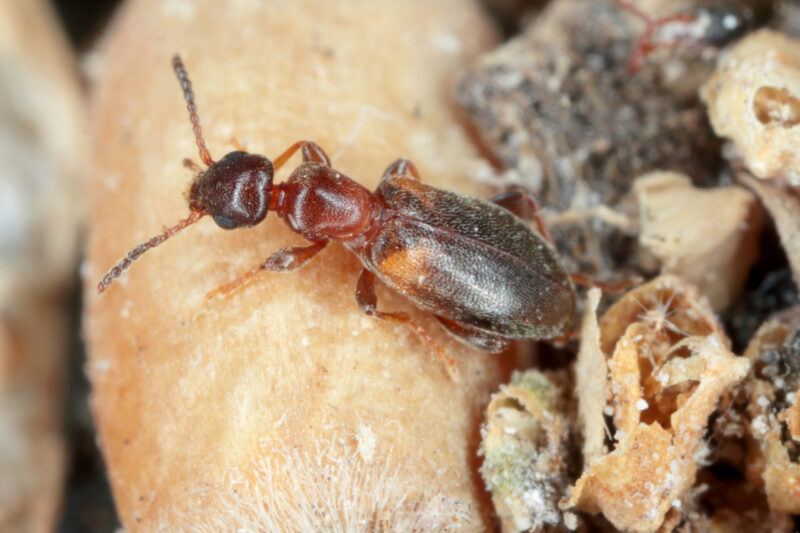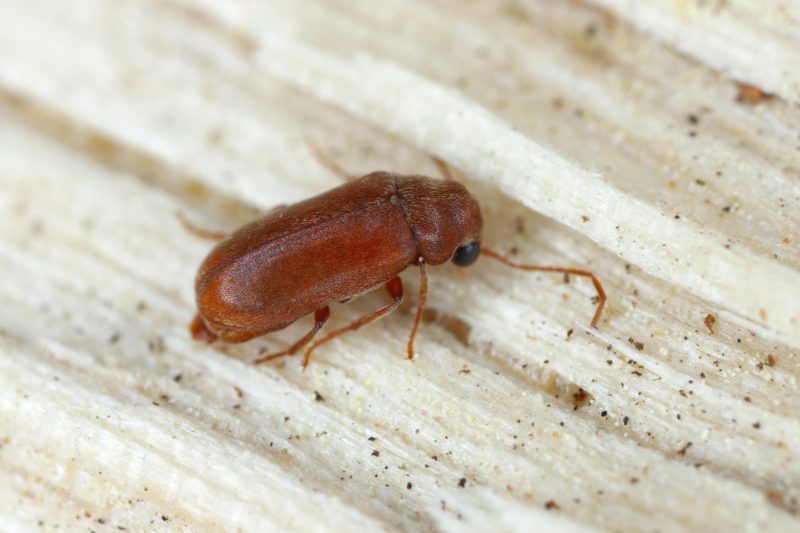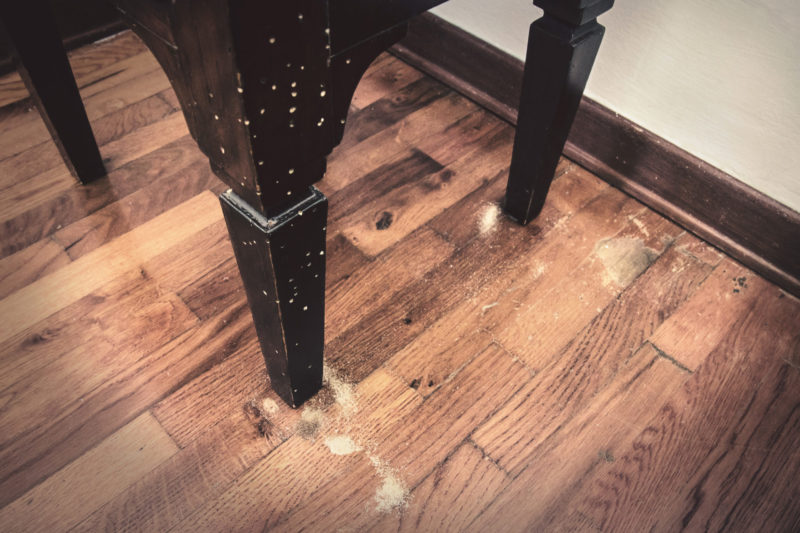Borers
Wood borers can cause extensive damage to wooden structures in homes and businesses. These pests burrow into timber, compromising its strength and integrity, often leaving property owners with significant repair bills. At Flick, we specialise in identifying and eliminating borer infestations to keep your property safe and secure.
If you suspect borer activity, don’t wait—call Flick Pest Control at call 0800 710 010 for expert advice and professional treatment.
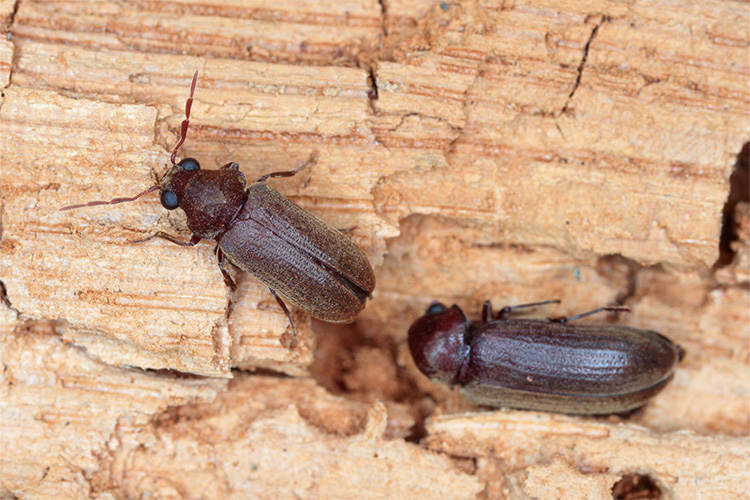

What Are Wood Borers?
Wood borers are insects that feed on wood during the larval stage. These pests target timber, causing structural damage over time. Common signs of a borer infestation include:
- Small round or oval exit holes on wooden surfaces.
- Fine, powdery dust (frass) near wood structures.
- Weak or hollow-sounding wood when tapped.
Left untreated, borers can weaken beams, floors, and furniture, leading to costly repairs.

Types of Borers Found in New Zealand
There are several types of borers that may infest homes or businesses:
1. Common Furniture Beetle
- Appearance: Small brown beetles.
- Damage: Typically targets softwoods, such as pine.
2. Powderpost Beetle
- Appearance: Small, reddish-brown beetles.
- Damage: Prefers hardwoods and can infest furniture, flooring, and tools.
3. Pinhole Borers
- Appearance: Tiny, black beetles often less than 5 mm in length.
- Damage: They create small, round holes in wood, accompanied by fine frass. Pinhole borers infest freshly felled logs and unseasoned timber, posing a risk to wooden construction materials.
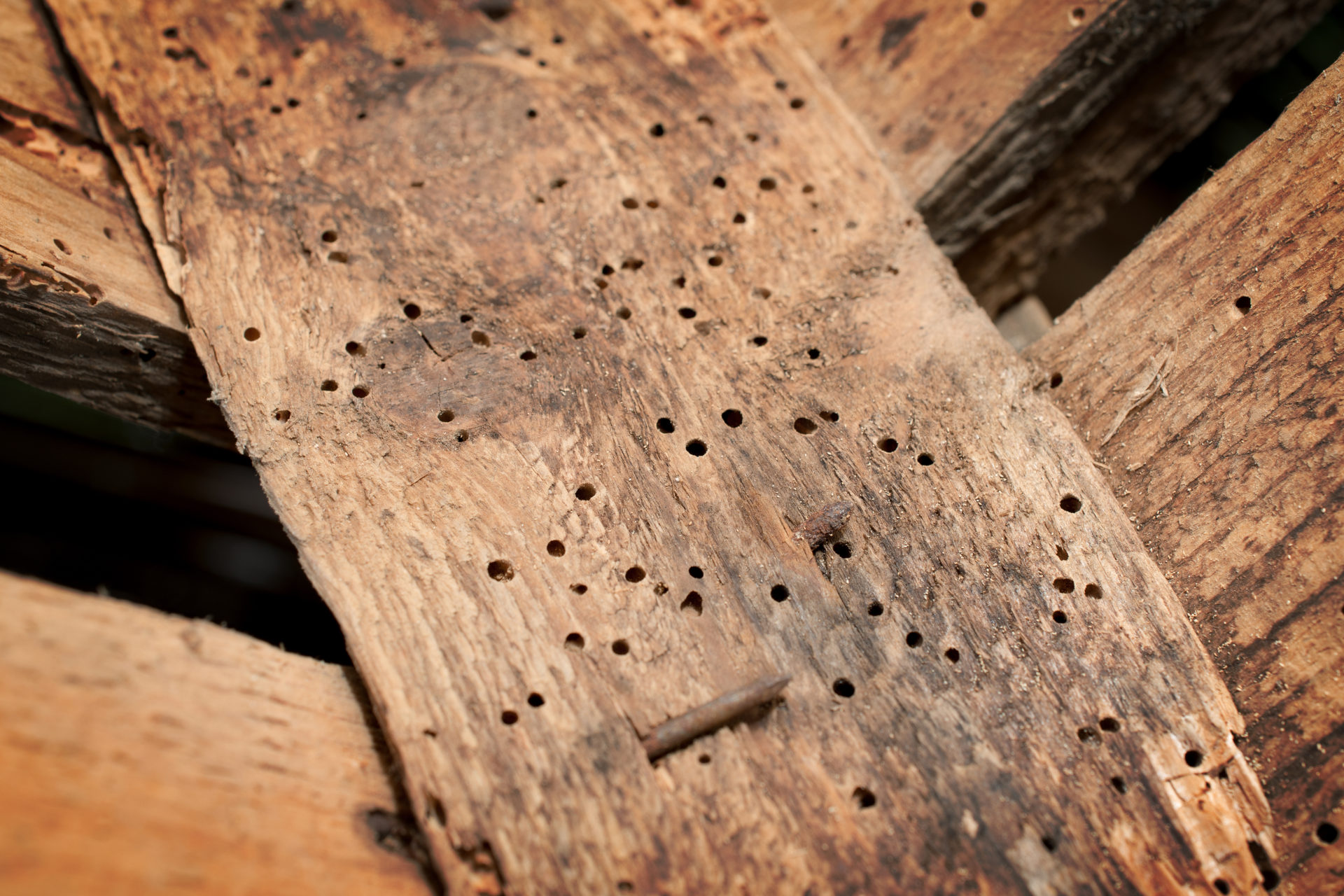
Signs of a Borer Infestation
Knowing the warning signs can help you identify and address a borer problem early:
- Visible Holes: Tiny round holes on wood surfaces where adult borers exit.
- Frass: A fine, talcum-like powder that collects under infested wood.
- Weak Timber: Wood that crumbles or breaks easily when pressure is applied.
If you notice any of these signs, it’s essential to act quickly to avoid further structural damage.
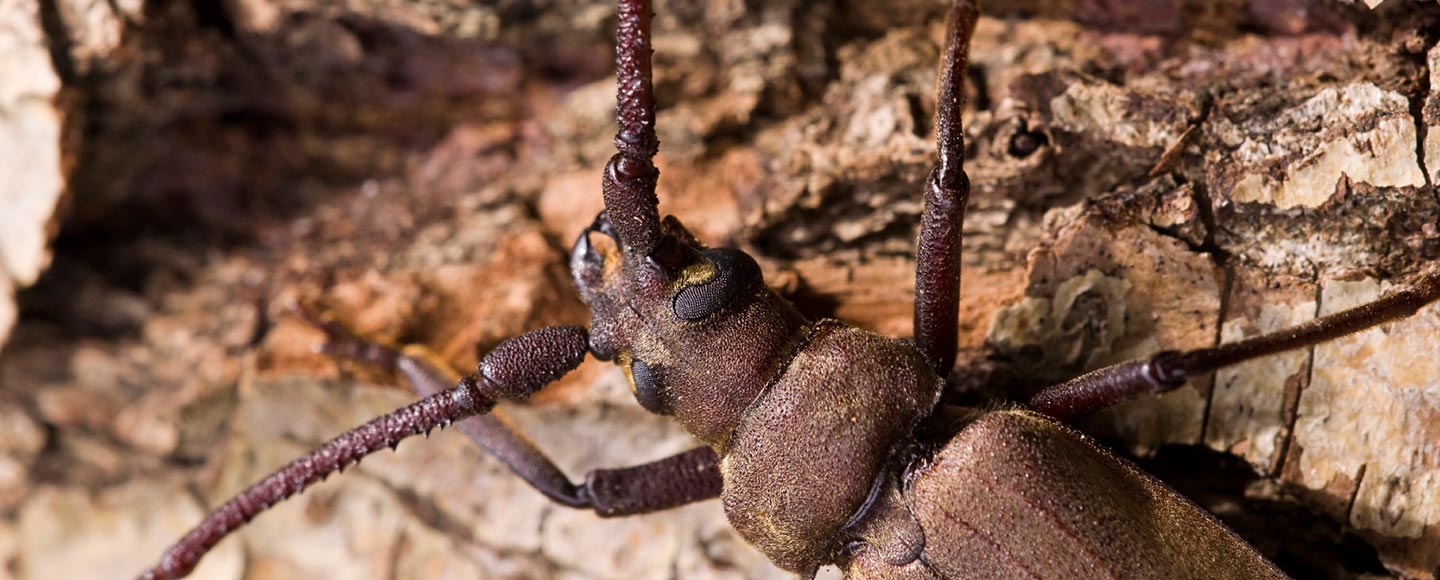
How to Prevent Borers
Preventing borers is key to protecting your timber and maintaining your property’s value. Here are some steps you can take:
- Inspect Regularly: Periodically check timber structures for early signs of infestation.
- Use Treated Timber: Opt for pre-treated wood that resists borer attacks.
- Control Moisture Levels: Keep wood dry, as borers are attracted to damp timber.
- Seal Cracks: Seal any cracks or gaps in wooden surfaces to deter borers from laying eggs.
Regular maintenance and proactive prevention can save you time and money in the long run.
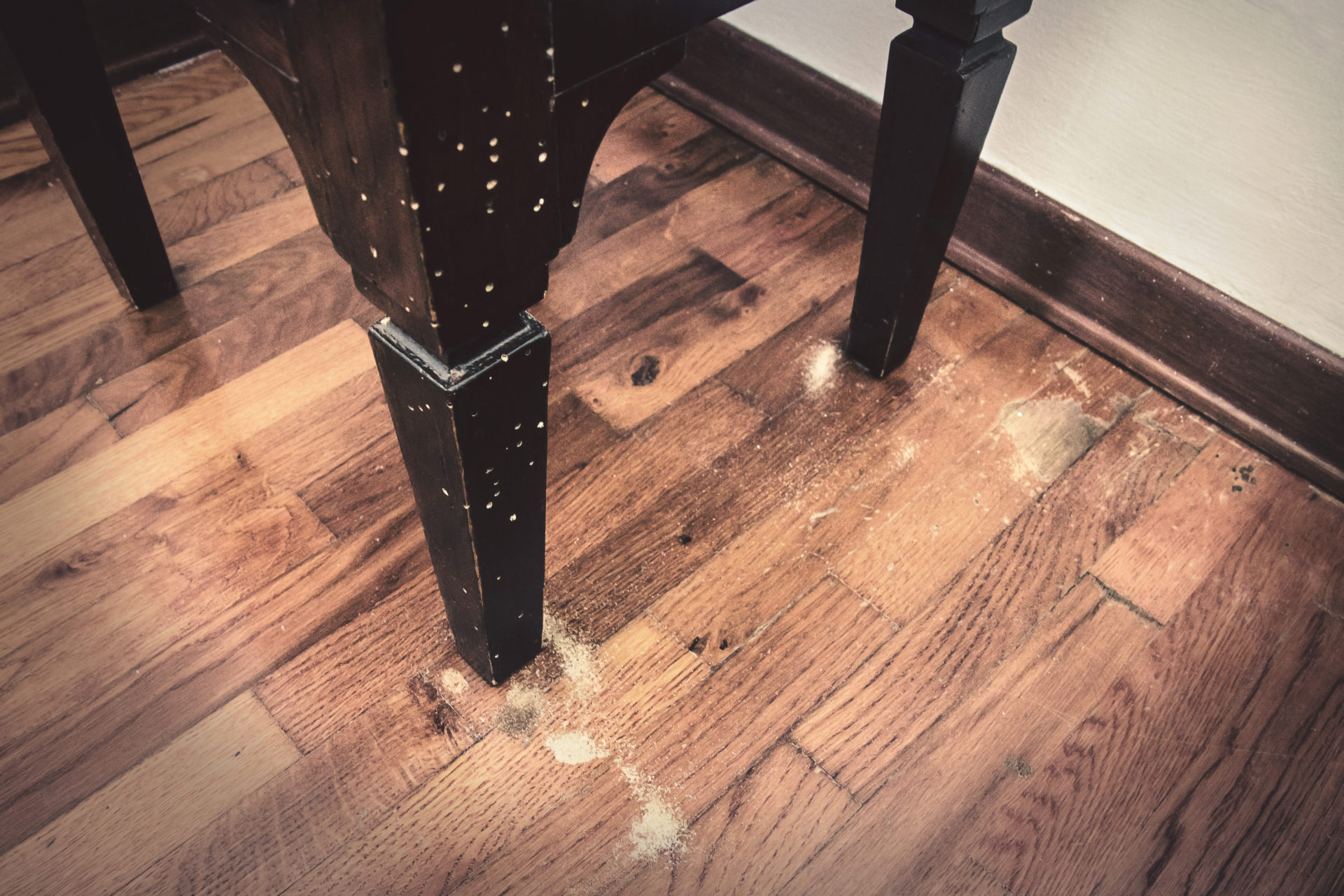
How to Repair Borer Damage
Dealing with borer infestations often involves addressing the damage they leave behind. While prevention and treatment are crucial, repairing the affected areas can restore the integrity and appearance of your property.
1. Assess the Extent of Damage
Before making repairs, inspect the wood to determine whether it can be salvaged. Severely weakened or hollow wood may need to be replaced entirely.
2. Replace Damaged Timber
For structural elements, it’s often safer to replace damaged wood with pre-treated or hardwood options to prevent future infestations.
3. Use Wood Fillers
For non-structural repairs, such as furniture or decorative wood, use wood fillers to patch up holes and restore the wood’s surface.
4. Seal and Protect
After repairs, seal the wood with protective coatings to deter future borer activity. Flick can advise on the best treatments to maintain your timber’s longevity.
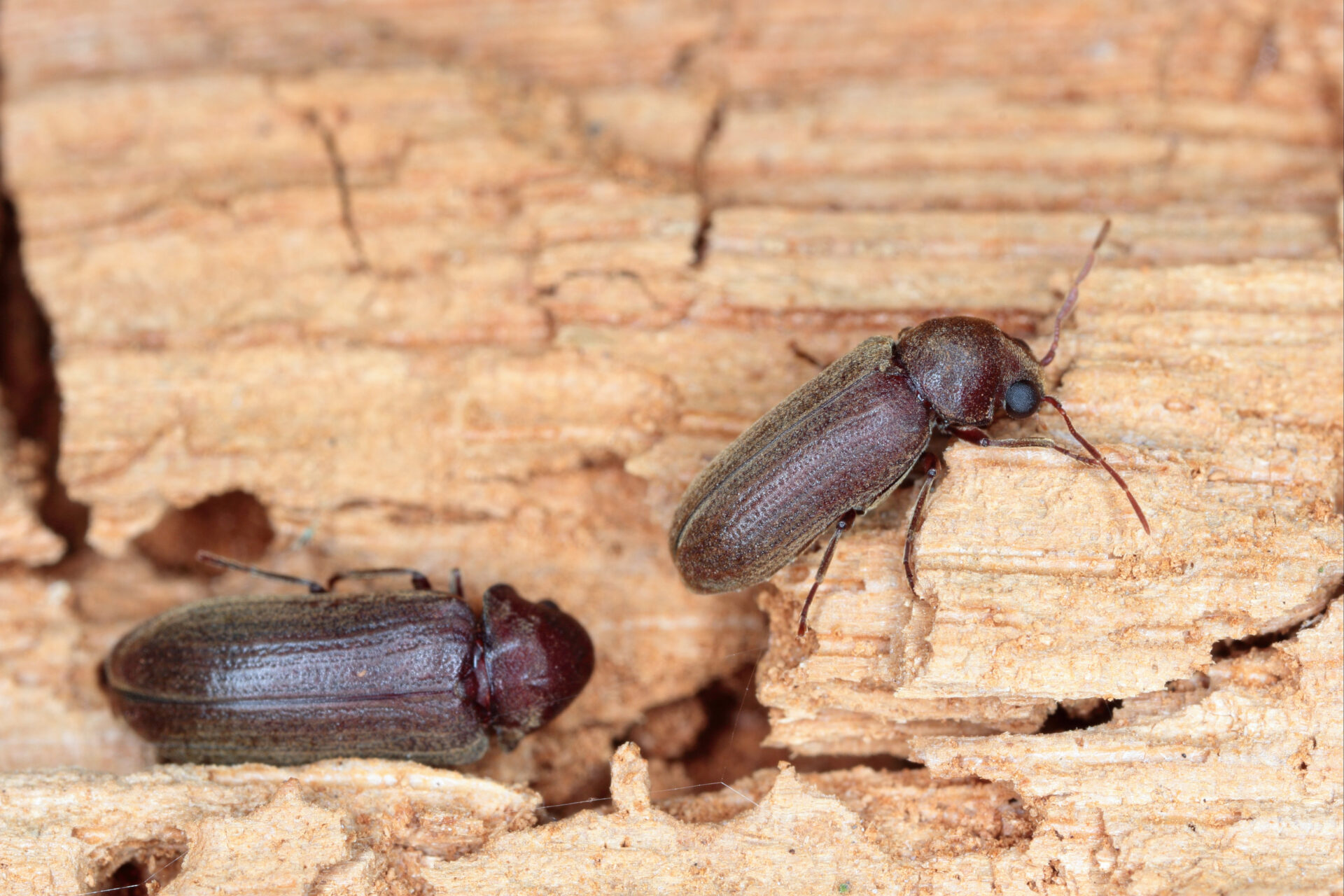
Understanding the Life Cycle of Borers
Knowing the life cycle of wood borers can help in identifying infestations and planning effective control strategies. Borers go through four main stages:
1. Egg Stage
Adult beetles lay eggs on or inside wood surfaces, especially untreated or damp timber.
2. Larval Stage
This is the most destructive phase. Larvae tunnel through the wood as they feed, leaving behind frass and weakening the timber.
3. Pupal Stage
The larvae transition into pupae within the wood, preparing for adulthood. This stage often goes unnoticed.
4. Adult Stage
Adults emerge from the wood, leaving behind small round holes. They mate and lay eggs, restarting the cycle.
Understanding this cycle underscores the importance of prompt action to break it and protect your property.

The Cost of Ignoring Borer Infestations
Ignoring a borer infestation can lead to escalating problems that go beyond structural damage. Here’s why it’s essential to address borer issues immediately:
1. Increased Repair Costs
As borers continue to weaken wood, repairs become more extensive and expensive. Early treatment minimizes costs.
2. Compromised Safety
Structural elements like beams and floors can become unstable, posing safety risks to occupants.
3. Reduced Property Value
Visible borer damage can decrease the resale value of your property, deterring potential buyers.
4. Spread to Other Areas
Unchecked infestations can spread to other wooden elements, including furniture, tools, and storage units.
Addressing borer problems early with professional help, such as Flick’s borer control solutions, saves money, time, and stress in the long run.
Flick’s Borer Control Solutions
At Flick, we offer a comprehensive range of borer control services to eliminate infestations and protect your property. Our process includes:
1. Inspection
Our technicians conduct a thorough inspection to identify the type of borers and assess the extent of the infestation.
2. Treatment
Depending on the severity of the infestation, we apply targeted treatments, including:
- Surface Treatments: For early-stage infestations, we treat affected areas with specialized products.
- Fumigation: For severe infestations, fumigation effectively eradicates borers in inaccessible areas.
3. Prevention
We provide recommendations and long-term solutions to prevent future borer problems, including timber treatment options and maintenance tips.
Common Borer Questions
Where do borers live?
Borers are often found in high-humidity areas such as subfloor spaces and joists.
Interior spaces such as door frames, window sills, and architraves.
The skeleton, including the subfloor and any timbers in the roof.
What are signs of borer activity?
Evidence of borer activity includes exit holes and frass. Breakout of the beetles from wood is more common when light levels are low. If you want to find borers, check behind and beneath the furniture. Look for small exit holes and wood dust (frass) around the affected areas.
The tunnels, often known as “galleries,” can eventually cause the wood to break. You know you have a problem if you find dead beetles or if the wood is disintegrating at the edges.
Females can lay anything from zero to one hundred eggs, although these eggs may be difficult to find. While they prefer untreated, rough-sawn surfaces for nesting, they will also use other nooks and crannies, such as those left by previous occupants, for this purpose.
When are borers most active?
Borers reach maturity and begin mating between October and February, when the weather is milder.
How can borers be prevented?
Borers prefer wet wood, such as that found in the subflooring of a home. Ensure proper ventilation in timber areas to avert timber boring insects. Don’t block off the crawl space with clutter.
Since less sunlight hits the south side of a building, it’s also more susceptible to borer infestation. If the wood on this side of the house tends to retain moisture, you should be very vigilant about checking for wormholes.
Before bringing that antique or used couch home, be sure there are no worm holes in it.
Treating or painting wood before using it is the greatest way to keep borers away.
Common Borer Species
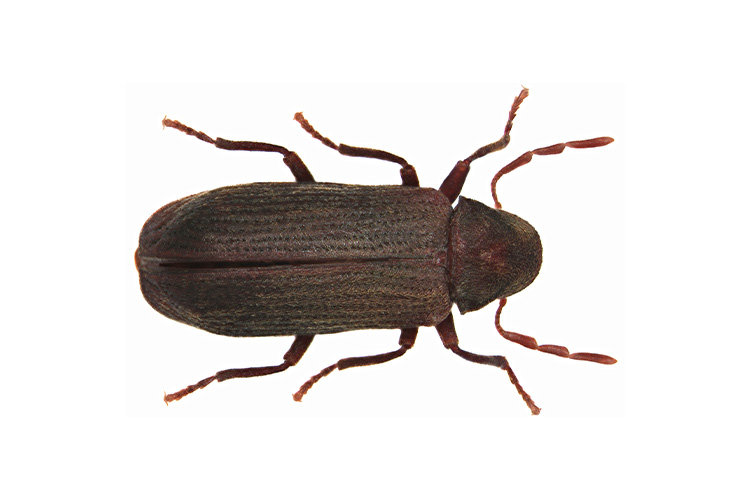
Common Furniture Beetle (Anobium punctatum)
Apppearance
The prothorax, which resembles a hood, is used to identify these insects, which have brown, oval bodies and measure between 2.5 and 4.5 mm in length.

Powderpost Beetle (Lyctus Beetle)
Apppearance
Noticeably similar to the common furniture beetle in appearance. Powderpost beetle adults can be anywhere from 3 to 19 millimetres in length, with the shorter prothorax accounting for much of that variation.
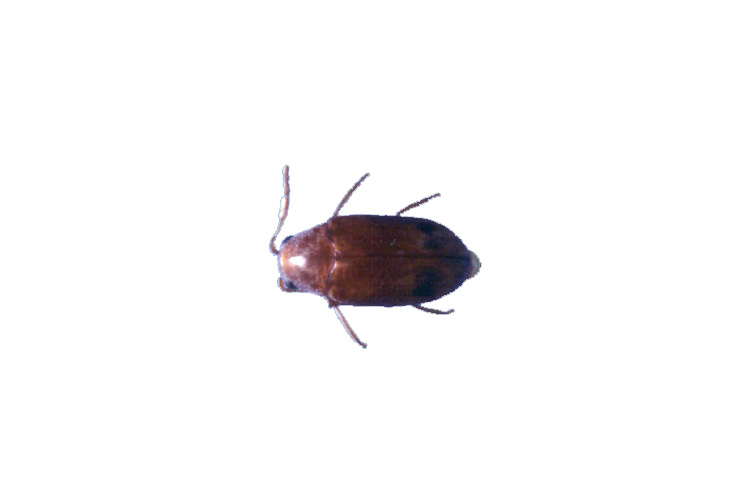
Queensland Pine Beetle
Apppearance
The adult Queensland pine beetle measures 3 millimetres in length and 15 millimetres in width. Its warm reddish brown body is coated in microscopic hairs. Shiny on the outside, their antennae are club-shaped and comprised of three segments. The legs of a Queensland pine beetle are often folded closely near to its body.
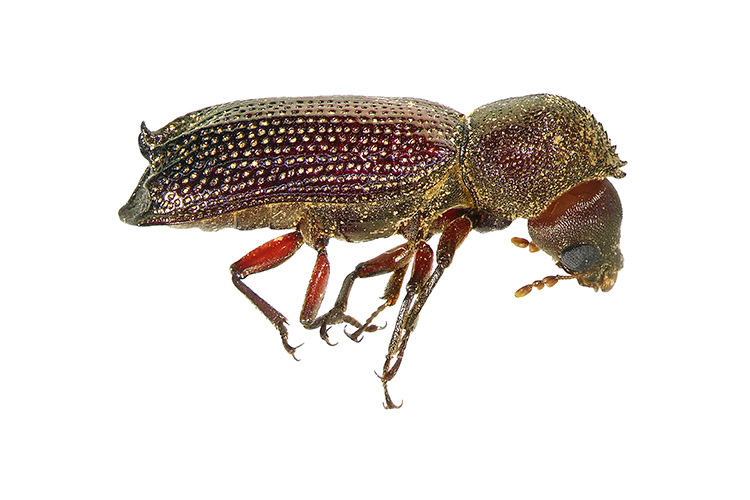
Lesser Auger Beetle
Apppearance
Adult auger beetle has a long, cylindrical body measuring 6 to 13mm in length and 2 to 3.5mm in width. Visible prothorax, shiny red-brown or brown-black colouring. At the very end of their bodies, males have two curled hooks.
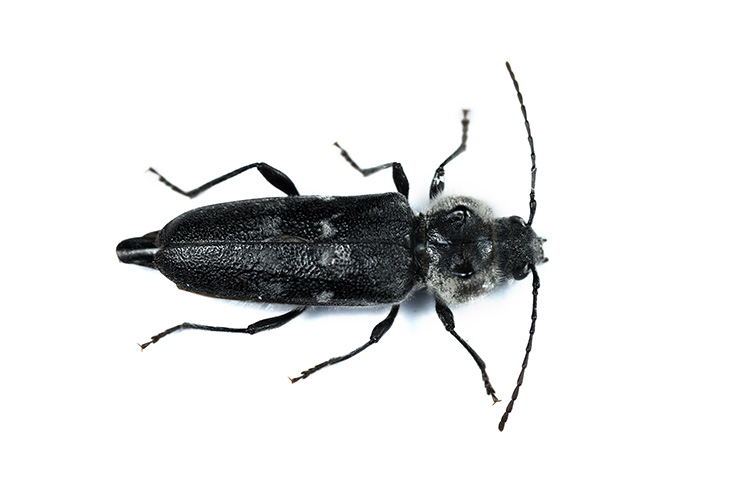
European House Borer (Hylotrupes bajulus)
Apppearance
Apartment for Mature Europeans Length might range from 8mm to 20mm for borer adults. Despite being either brown or black, they often appear “greyish” due to the fine due that covers their entire bodies. The legs and antennae can sometimes be a ruddy colour.
I found Borers! Help!
Don't worry, we're here to help. Follow these steps to stay safe until help arrives!
Call a Professional
Call Flick Pest Control Immediately.
If you encounter borers in your home or business, you may be dealing with an infestation. Don’t wait until the problem gets out of hand – we can help protect your property and ensure the health and safety of those around you. Fill out the form below or call 0800 710 010 today.
Leave the Borers Alone
Trust Flick Pest Control to handle the situation
Our pest control technicians have the knowledge, experience, and tools necessary to effectively and safely eliminate pests from your home or business. Attempting to treat borers on your own can be risky and may not fully eradicate the problem.
We will and ensure a safe and effective outcome for your property.
There May be More!
Don’t Go Looking Around!
Flick’s pest control experts will perform a thorough inspection of the property to identify any areas where borers may be present, followed by the development of a treatment plan tailored to the specific needs of the situation. By implementing effective pest control strategies, we can help ensure a pest-free environment for you.

